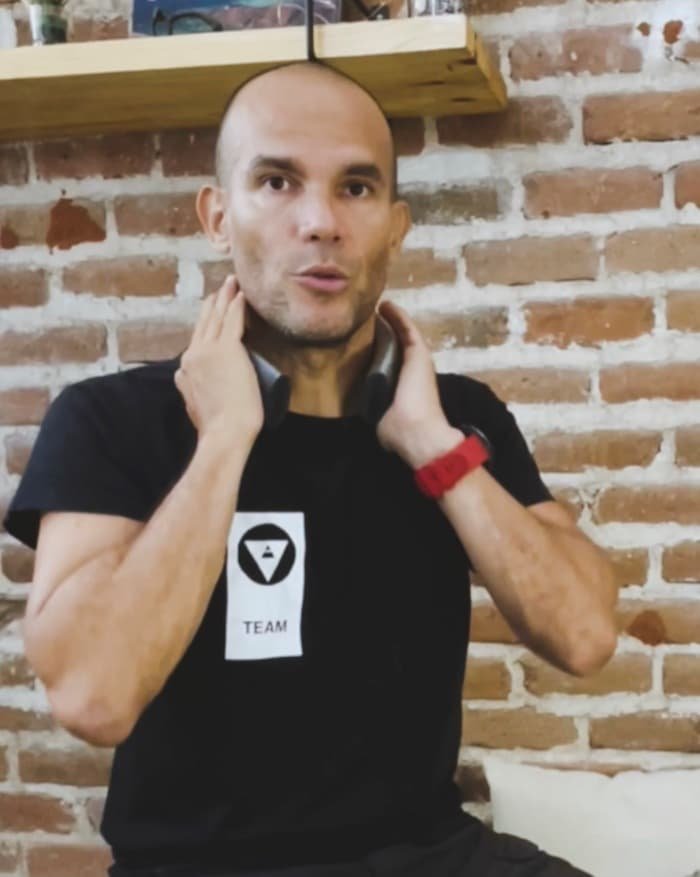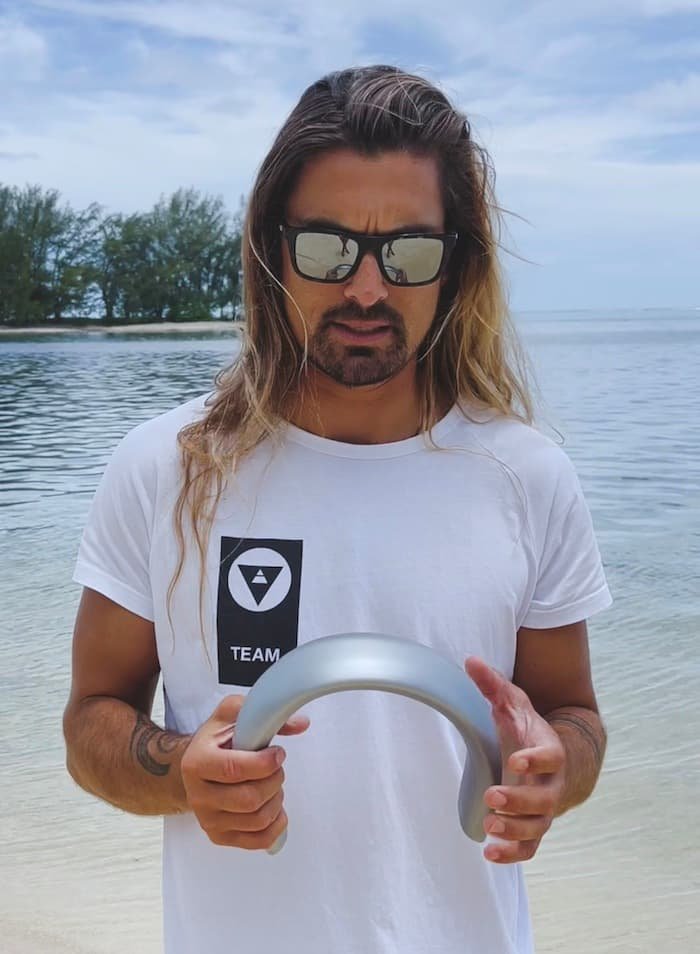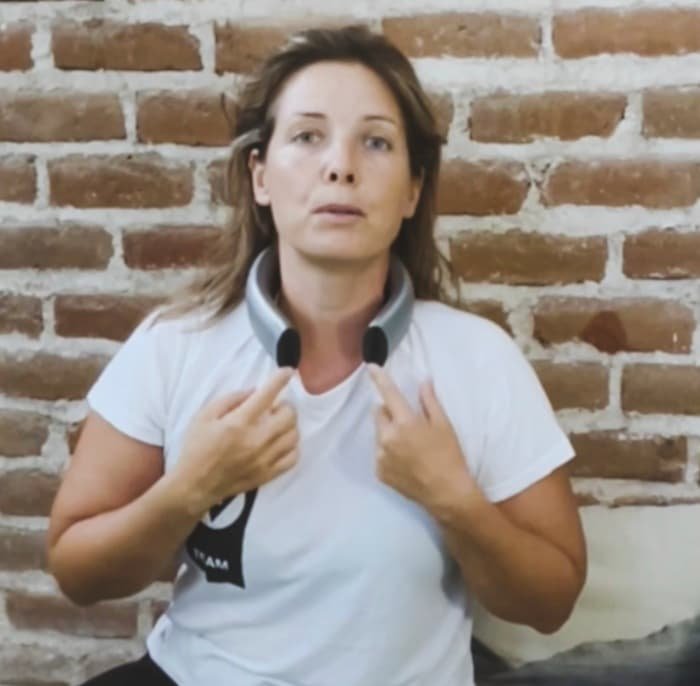
 Nick Pelios
Freediver, Creator
Nick Pelios
Freediver, Creator

 Nick Pelios
Freediver, Creator
Nick Pelios
Freediver, Creator
Carlos Coste, Josh Munoz and Petra Obecurova explore and review Alchemy's new heavy neck weight. Learn more about their personal experiences, detailing the product's comfort and flexibility, the weight's practical advantages, and its applications in various diving scenarios. Discover how Heavy simplifies training, enhances underwater filming, and accommodates changes in wet suit thickness. Whether you're a seasoned freediver or an underwater enthusiast, their insights into the heavy neck weight's design and performance offer a valuable perspective on this game-changing diving accessory.
I've recently put Alchemy's heavy neck weight to the test during my time here in Baja California, Mexico, over the past days and weeks. This comprehensive trial included various activities such as teaching, filming, and, of course, regular training.
Let's delve into the material aspect of this neck weight. The texture is not only pleasing on the skin and wet suit but also remarkably comfortable considering the weight in use. Its flexibility and memory characteristics allow it to adapt seamlessly to the neck, ensuring a snug fit. Importantly, the material's memory feature adds an extra layer of safety, eliminating concerns about it shifting during dives in-depth or dynamic apnea.
During the recent days, my focus has been on testing the 1.8 kg variant, the lighter option among the heavy models. Alchemy provides three weight options: the 1.8 kg weighing 40 cm, the 2 kg at 45 cm, and the 2.2 kg measuring 50 cm. When compared to the standard Alchemy neck weight, typically around 1 kg, the heavy model simplifies the diving experience, especially for those who require less weight. This innovation allows for a more straightforward approach, eliminating the need for additional weights on the belt and relying solely on the neck weight.
Moving beyond the realm of training and teaching, I want to highlight its practicality in filming, particularly in shallow waters. This neck weight proves to be a valuable tool, streamlining the process of adjusting weight and buoyancy during filming expeditions, whether capturing students or exploring caves.
Both options I currently possess conform comfortably to the neck, thanks to the material's flexibility and memory retention. Regardless of the chosen option, adapting it to one's size and shape is an easy and comfortable process. Having extensively tested both options, I can confidently affirm that they work seamlessly. The quality of the design speaks volumes about Alchemy's commitment to producing top-notch equipment. With years of experience using their products, the new heavy model stands as a testament to their dedication to high-level design and quality materials.

Greetings, Alchemy family! Josh Munoz here, bringing you insights as a freediving instructor and photographer, focusing on the latest addition to Alchemy's lineup – the new heavy neck weight.
This innovative neck weight comes in a range of sizes, spanning from 1.8 kg to approximately 2.2 kg. For our American friends, that translates to just shy of 4 lb to upwards of about 5 lb. The versatility of this heavy neck weight is particularly advantageous for those exploring cold water environments. For instance, in places like Hawaii during winter, where a 5 mil wet suit is the norm, this product becomes a game-changer, potentially eliminating the need for additional weights on the belt.
Maintaining the design of its thinner counterpart, the heavy neck weight features a non-slip material. This ensures that once placed around your neck, it remains secure and doesn't slide or fall off, offering stability even on wet suits or neoprene.
The added length, especially in the heavier version, allows for a secure closure around the neck without causing discomfort or constriction. It prevents unwanted sliding or bumping on the chin when fully pressed down, offering a hassle-free experience during dives.
In my experience, the heavy neck weight finds its best use during no fins diving, or CNF. The weight centered around the neck contributes to a more streamlined, arrow-like position. This proves invaluable for maintaining a vertical position, a challenge often encountered during CNF. The added weight assists in achieving and maintaining the desired form on the descent and ascent, enhancing the overall diving experience.

I'd like to delve into the distinctions and share my firsthand experiences with the new heavy neck weight while drawing comparisons between the new and the classic version. Upon receiving it, I found myself contemplating how it would feel, given the apparent differences. However, I can confidently affirm that despite its obvious variance, this particular model weighs in at 1.8 kg and shares the same dimensions as the classic one—measuring 40 cm. The material exhibits a pleasing smoothness and flexibility akin to the classic version. Demonstrating its adaptability, I can easily adjust and secure it around my neck, whether I choose to leave it open, close it, or play around with its positioning – it stays perfectly in place.

For dynamic diving, my preference leans towards leaving it slightly closed. In the depths, it remains steadfast, offering reassuring stability even when in a head-down position. The overall feel is not only secure but also comfortable, contributing to a positive diving experience.
Adding another layer to its versatility, I've been accustomed to a 1.3 kg weight. With winter approaching in Baja and the switch to a thicker wet suit, the new heavy neck weight proves to be a valuable addition. This eliminates the need to burden my weight belt with additional weight, providing a more comfortable alternative. The benefit extends beyond the reduction of weight on my waist, particularly since I am not a fan of the sensation. This versatility becomes particularly important during camera work or exploration, allowing me the freedom to move my neck effortlessly even with the added thickness of the neck weight.